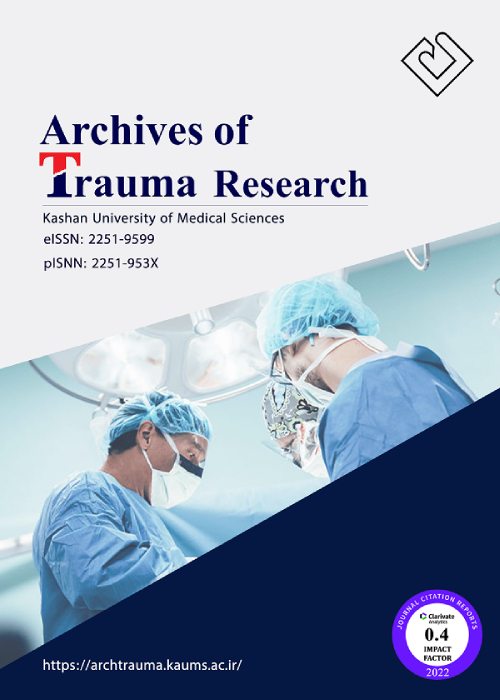Epidural hematoma in computed tomography scan-based scoring systems of traumatic brain injury
Dear Editor Traumatic brain injury (TBI) is a harmful condition that permanently or temporarily damages brain functions and imposes enormous costs on health systems. Computed tomography (CT) scan is the preferred modality to detect injuries and determine TBI patients' prognoses in emergency departments. Thus far, some scoring systems have been introduced for grading TBI based on CT scan findings, including the Marshal,[1] Rotterdam,[2] Helsinki,[3] Stockholm,[4] and NeuroImaging Radiological Interpretation System (NIRIS) [Table 1].[5] This letter aims to briefly raise issues regarding the scoring of epidural hematoma (EDH) in CT scan-based scoring systems of TBI.Epidural hematoma is the gathering of blood between the dura mater and the skull. This intracranial hematoma usually occurs following the bleeding from the middle meningeal artery and, less commonly, from the dural venous sinuses.[6] Some studies have shown that EDH positively affects the outcome, so patients with EDH would have a better overall prognosis.[2] A typical EDH's prognosis is good if diagnosed early and managed before deterioration. Gennarelli et al., showed that the EDH death rate is approximately one-tenth of subdural hematoma.[7] Bricolo et al., reported that mortality should be zero in uncomplicated EDH.[8]On the other hand, EDH can be potentially life-threatening. EDH of venous origin can gradually spread, and its findings may appear late, leading to a delayed diagnosis and treatment. Consequently, EDH expansion can lead to herniation, permanent neurological damage, and death.[9] EDH with a size greater than 30 ml or a midline shift of more than 10 mm does not have a good prognosis.[9] The swirl sign indicating active bleeding also worsens the prognosis.[10]The presence or absence of EDH is evaluated in four CT scan-based scoring systems of TBI [Table 1]. Three scoring systems, including Rotterdam, Helsinki, and Stockholm, consider the presence of EDH as a favorable prognostic factor, i.e., patients with EDH on their brain CT scans get a lower score. However, in the NIRIS, EDH is scored as an adverse prognostic factor based on its volume, leading to a higher score.Hence, EDH cannot always be a favorable prognostic indicator. For instance, the presence of EDH along with diffuse axonal injury (DAI) worsens the outcome.[11] However, according to Rotterdam, Helsinki, and Stockholm systems, the association of EDH with DAI would have a lower score than DAI alone. Besides, high-volume EDH can worsen the situation by causing a midline shift and brain herniation.[9] Nonetheless, the specific size of EDH is not checked in any of these three systems.The scoring systems have been developed from the statistical weighting of variables. However, it is necessary to look at the issue more dynamically and comprehensively for a more accurate outcome prediction. Adjusting CT scoring systems with clinical characteristics and scales such as the Glasgow Coma Scale (GCS) and head injury biomechanics may also be helpful.
- حق عضویت دریافتی صرف حمایت از نشریات عضو و نگهداری، تکمیل و توسعه مگیران میشود.
- پرداخت حق اشتراک و دانلود مقالات اجازه بازنشر آن در سایر رسانههای چاپی و دیجیتال را به کاربر نمیدهد.



